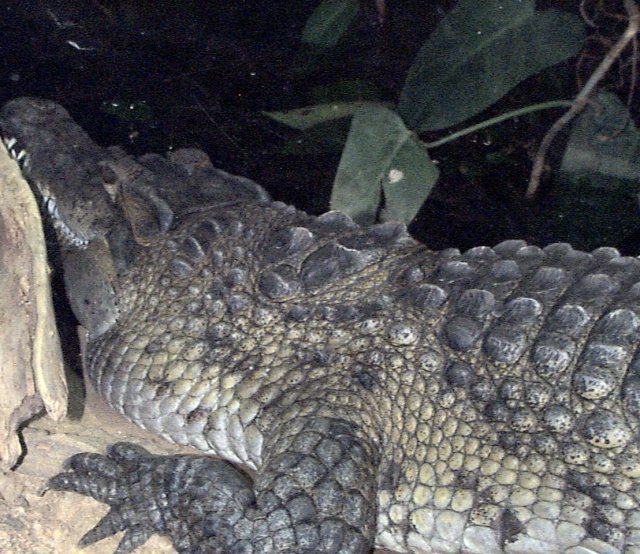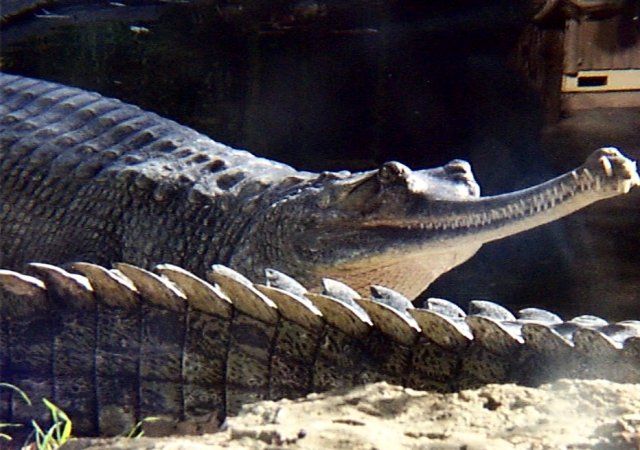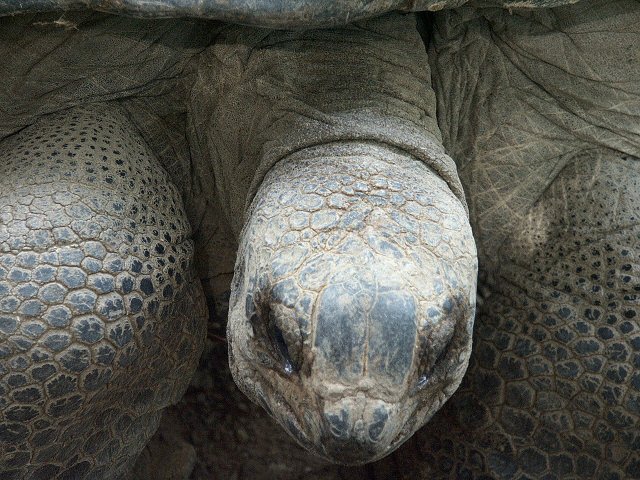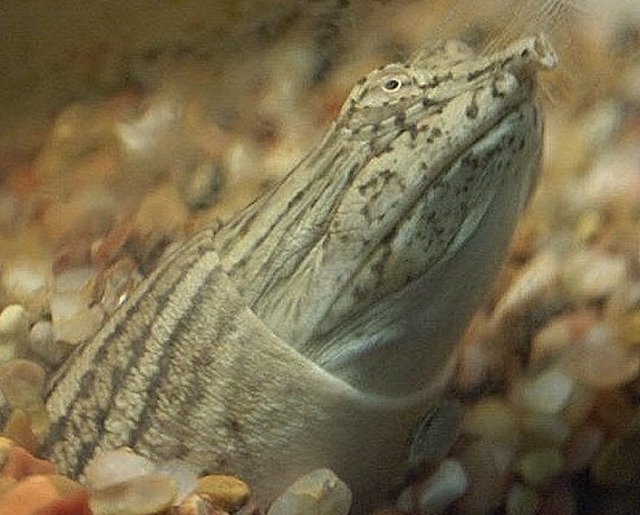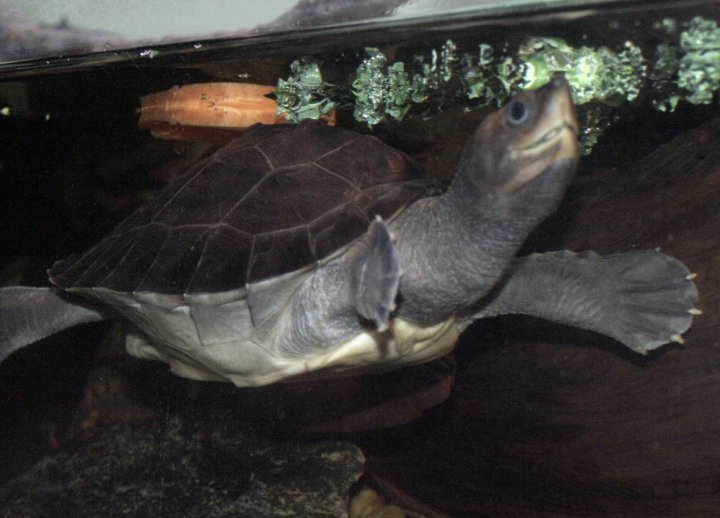Scales show enormous variety in reptiles. As you examine the scales in the animals below, you can enlarge each of the pictures for a closer look at their scales. Even on a single animal, many different types of scales can be seen. Below you will find some examples of different types of reptilian scales.
Scales in Crocodilians:
In the Philippine crocodile below, you can see both rounded scales and larger scales with crests -- a raised ridge. Where are the crested scales located? Are all the scales the same size? Where are the larger scales located? In the picture of the gharial (an Indian crocodile), you can see an exaggerated example of crested scales. In the picture, one gharial is lying behind the tail of another. Click here for another view of gharial tail scales. Compare the scales on the crocodiles below with the scales of this American alligator.
Recent genetic studies have suggested that crocodilians and turtles may be more closely related to each other than they are to lizards and snakes. Compare the scales of the Philippine crocodile above with the scales of this Alligator snapping turtle. Visit the Fort Worth Zoo (or your local zoo) to see the scales of other crocodilians.
Scales in Turtles:
On the turtles below, examine both the scales that cover the shell and those on the head and legs. Turtles also have a large specialized scale that forms the beak. Turtles (like birds) don't have teeth. Note the conspicuous growth rings on the shells of some of the turtles below. Can you see similar growth rings on the body or head scales?
Some turtles
are called soft-shelled because their shells are composed only of dermal
bones without a covering of hardened scales. The long-necked turtle
below (Chitra), can still withdraw its head part way into the inner
shell. Examine this turtle closely; can you find any scales at all?
Chitra is a burrowing turtle and spends a lot of time buried in the
pebbles of its exhibit. What is the advantage of this behavior? The
Mata-Mata turtle has a typical shell, but its head and legs also display
decorative projections. What do you supposed the function of these projections
might be? |
|
| There are many other species of turtles at the Fort Worth Zoo. Some of them are aquatic turtles and some are land tortoises. Compare the shell and body scales of the aquatic Malaysian painted tortoise and the terrestrial African spurred tortoise below. How are they different? How would you interpret this difference in terms of thr functions of scales in reptiles? | |
